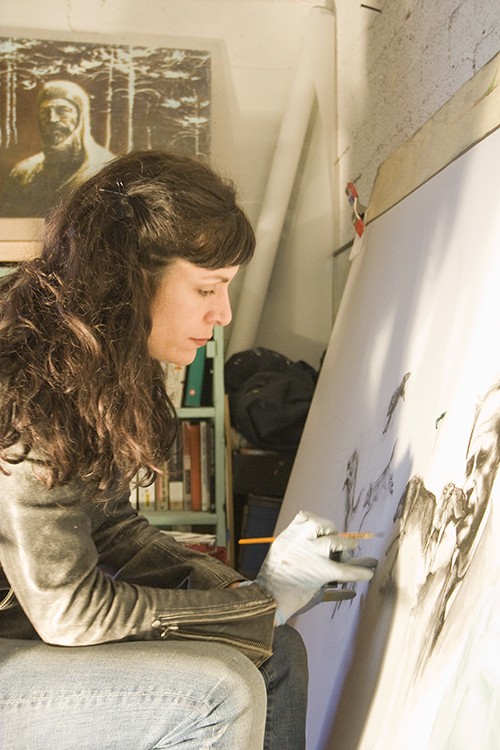“”Biennial”” — it’s a weird word. But to students pursuing the arts, it’s a big deal. A biennial is a competitive art show that occurs once every two years, and showcases the work of the best artists in a given region.
The Tucson Museum of Art has hosted its biennial since 1948. The Arizona Biennial 2011 is currently accepting submissions until March 12.
Meredith Hayes, the director of marketing for the Tucson Museum of Art, says that the biennial “”gives artists who aren’t well known a chance to be hung next to artists who are well known.”” The biennial accepts work from anyone over the age of 18, in any medium. A distinguished guest curator, whose identity remains a secret, will judge the works, and the selected pieces will be shown in the museum during the summer.
In 2007, 53 artists were chosen from more than 700 submissions. Statistics like these can be daunting for applicants. But of the 44 artists featured in 2009, four were UA students — which means that in 2009, UA artists made up almost 10 percent of the best artists in the state. Hayes encourages students to submit their work this year as well.
Since the biennial hasn’t yet been judged, Wildlife was unable to contact current applicants. But two artists featured in 2009, Andrea Jensen and Gwyneth Scally, shared their experiences.
Andrea Jensen is an Masters of Fine Art student with an emphasis in painting. She saw the 2009 biennial as a way to contribute to the community, as well as “”a valuable chance”” to show her work, Jensen said. She successfully submitted a large-scale landscape painting on recycled billboard, called “”Body Fat.””
“”I often work with recycled billboards as a material that serves as a metaphor for our rate of consumption,”” Jensen said of her eco-friendly artwork. “”My work is about how our desires, perceptions and a loss of identity have resulted in the current environmental crisis.””
Since her achievement in the 2009 biennial, Jensen has continued to pursue the arts. “”My work is constant,”” she said. “”It is a practice. Through experimentation, research and studio time, the MFA program has taught me how to better this practice and, hopefully, improve my work.”” She said she plans to graduate this May, and would like to be a professor of art in the future.
Two years ago, Gwyneth Scally was also an MFA student in painting when her large-scale installation “”The Museum of Dying Giants”” was featured in the biennial.
“”This piece comprised a 9-and-a-half-foot-tall tent made of fake fur,”” Scally said. ””The tent was filled with living pine trees, gathered from Mount Lemmon, which slowly browned and died over the course of the exhibition.”” There was also a backlit painting at the opposite end of Scally’s installation.
Scally found inspiration for this project in the icebergs and pine forests of Newfoundland, Canada, where she spent a summer residency in 2007. The fragility of the ecosystem compelled her to explore the relationship between humans and nature through her art. “”‘The Museum of Dying Giants’ exposes the disparity between our dream of the Arctic, and its imperiled reality,”” Scally wrote on her website.
Aside from the time spent creating her vision and gathering materials, Scally spent three days building her large, complex installment at the biennial. She needed a large space to do the piece justice, so her acceptance into the Tucson Museum of Art came at the perfect time.
“”The installation of the finished piece is possibly my favorite part of art-making,”” Scally said. ””It is rather exhilarating to see the work come together.””
Scally has since graduated and entered the professional artistic community. She has had solo shows in New York and Los Angeles, among others. She continues to create impressive artwork with a similar emphasis on environmental issues and a renewed focus on icebergs.
As Jensen and Scally demonstrate, innovative and thoughtful student work has been highly successful in the Arizona biennials of the past. It will be exciting to see which student voices are featured this year, as more students gain exposure in the world of the arts.









